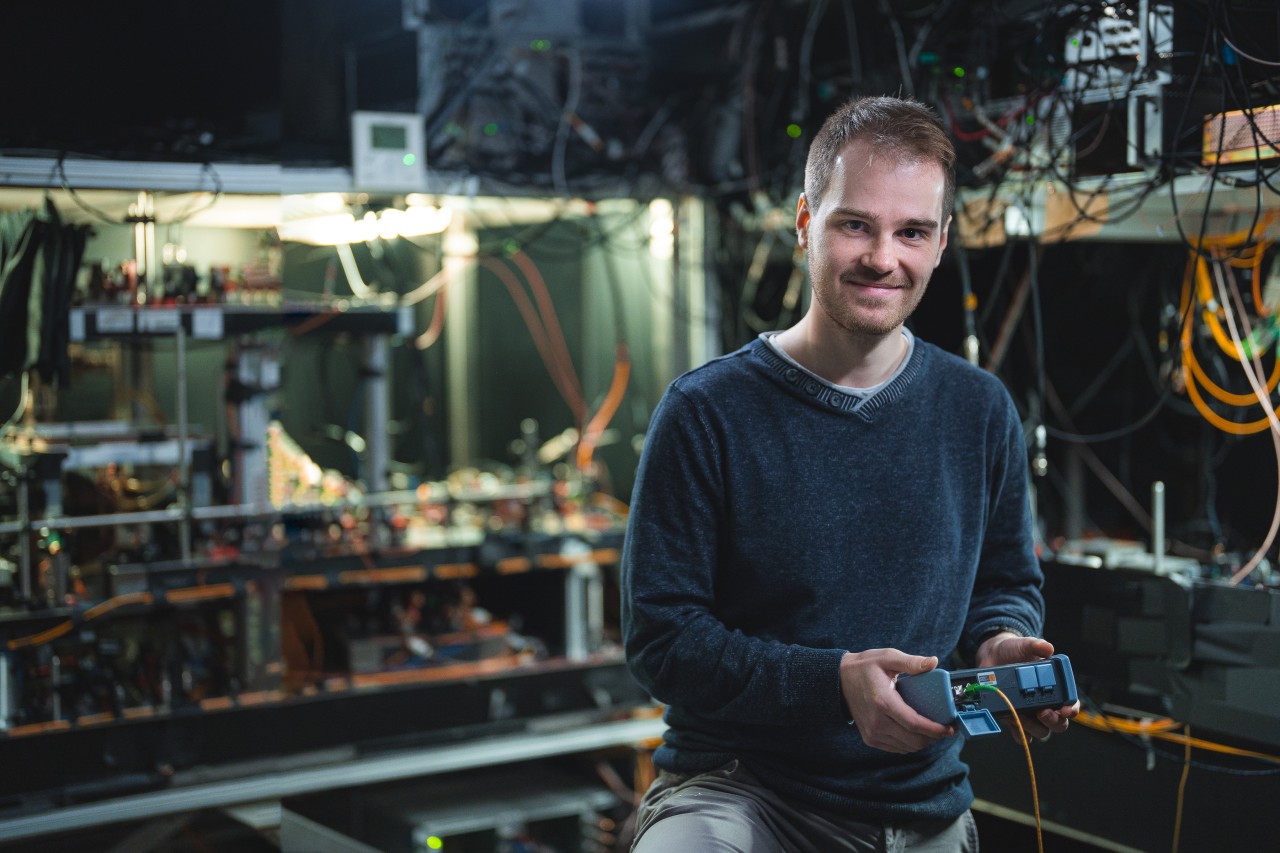Florian Fertig - Ludwig-Maximilians-Universität
1. Briefly describe your current position/project, research focus, and your role within MCQST.
I am a PhD student in the group of Harald Weinfurter at LMU. In our lab, we're working with single ultracold Rubidium atoms that function as quantum memory. If multiple of these quantum memories are entangled, they can be used for quantum communication.
 Ⓒ Christoph Hohmann / MCQST
Ⓒ Christoph Hohmann / MCQST 2. As part of MCQST visits and collaborations, you have often offered lab tours to our guests, which are always a highlight. What is your secret for breaking down complex topics to a non-scientific audience?
As we are working cold atoms, our labs differ significantly from the conventional perception of a physics lab. To manipulate our atoms effectively, we handle various lasers, creating many precisely calibrated pulses in terms of frequency, temporal shape, power and timing. This demands a complex setup of electronics, resulting in a tangle of cables looking like chaos to most of our visitors, although there is of course some structure to it. Similar impressions often arise when the optical table is observed.
Depending on the audience, I usually try to focus on such things, that are new and seem exciting to most visitors.
Moreover, since the start of my PhD, I frequently had to explain my daily work and topic of research. From this I learned relatively soon what things usually spark interest. Gauging the background of the audience is also very important, since I try to avoid being too technical. Plus, I always encourage questions in case my explanations were unclear or drift off and get too technical. Which is usually easy to notice, judging from their faces.
Our experiment demands a complex setup of electronics, resulting in a tangle of cables looking like chaos to most of our visitors, although there is of course some structure to it.
3. What is the coolest project you have worked on and why?
That has to be when we entangled atoms over 33km coiled fiber. Not only did it involve the "usual" atom-atom entanglement, which by itself is already quite cool since it involves two separated labs working together, but then additionally featured two quantum frequency converters transforming the, in fiber heavily absorbed, 780 nm photons to the low loss telecom regime. Although each piece was tested individually, seeing the composition work as intended was amazing. Also, during these times we involuntarily took data that, according to a former colleague, looked like Christmas trees.